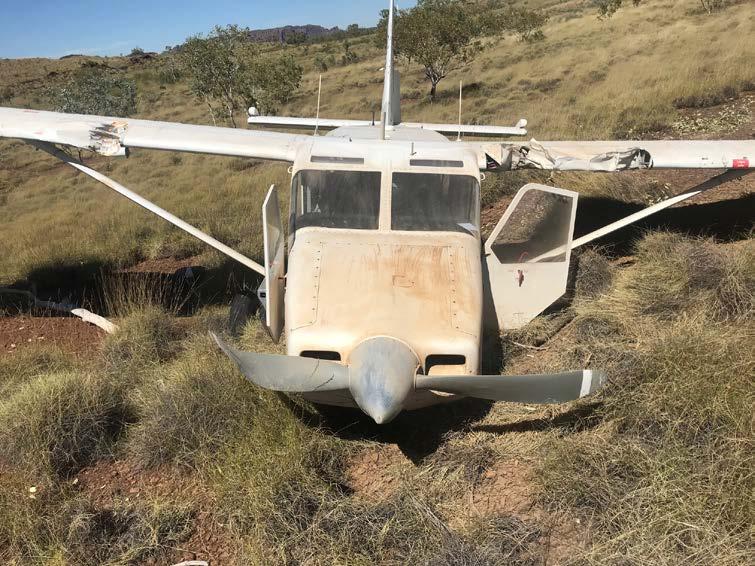Recent practice of emergency procedures helped a pilot to conduct a successful forced landing of a scenic flight in remote and difficult terrain.

On 14 May 2018, a Gippsland Aeronautics GA-8 Airvan departed Bellburn Airstrip, Western Australia on a scenic charter flight with the pilot and seven passengers on board. About 12 minutes after departure, as the pilot commenced a planned climb, he felt the aircraft’s performance become a bit ‘sluggish’, with lower climb and fuel flow rates than expected.
Various checks and troubleshooting did not yield any improvement in performance, and engine power slowly started to decrease. The pilot determined that a forced landing was required, and advised the passengers, briefing them on the process for evacuating the aircraft after landing.
During the descent, at approximately 150 ft above ground level, the pilot secured the engine and turned off the aircraft’s electrical system. During the landing roll, the Airvan’s wings hit some small trees and the aircraft came to rest in a ditch, tearing off the nose landing gear. The pilot and three passengers sustained only minor injuries.
The pilot’s handling of the forced landing contributed positively to the survivability of this accident in difficult terrain.
The ATSB investigation found that the air intake pipe to engine cylinder number six had probably detached in flight, leading to the loss of engine performance. There was insufficient evidence to determine why the intake pipe detached from the engine.
The pilot advised the investigation that recent practice forced landings in the Airvan had helped him to feel more comfortable with the emergency. In particular, the recent practice gave him a good appreciation for the aircraft’s glide ratio, which helped when selecting a suitable landing site.
The ATSB’s safety message from this investigation is the value of frequent emergency procedures training. The pilot’s handling of the forced landing contributed positively to the survivability of this accident.
Although flight reviews are required every two years as a minimum, the ATSB reminds pilots and operators of the benefits of more frequent practice of emergency procedures.


